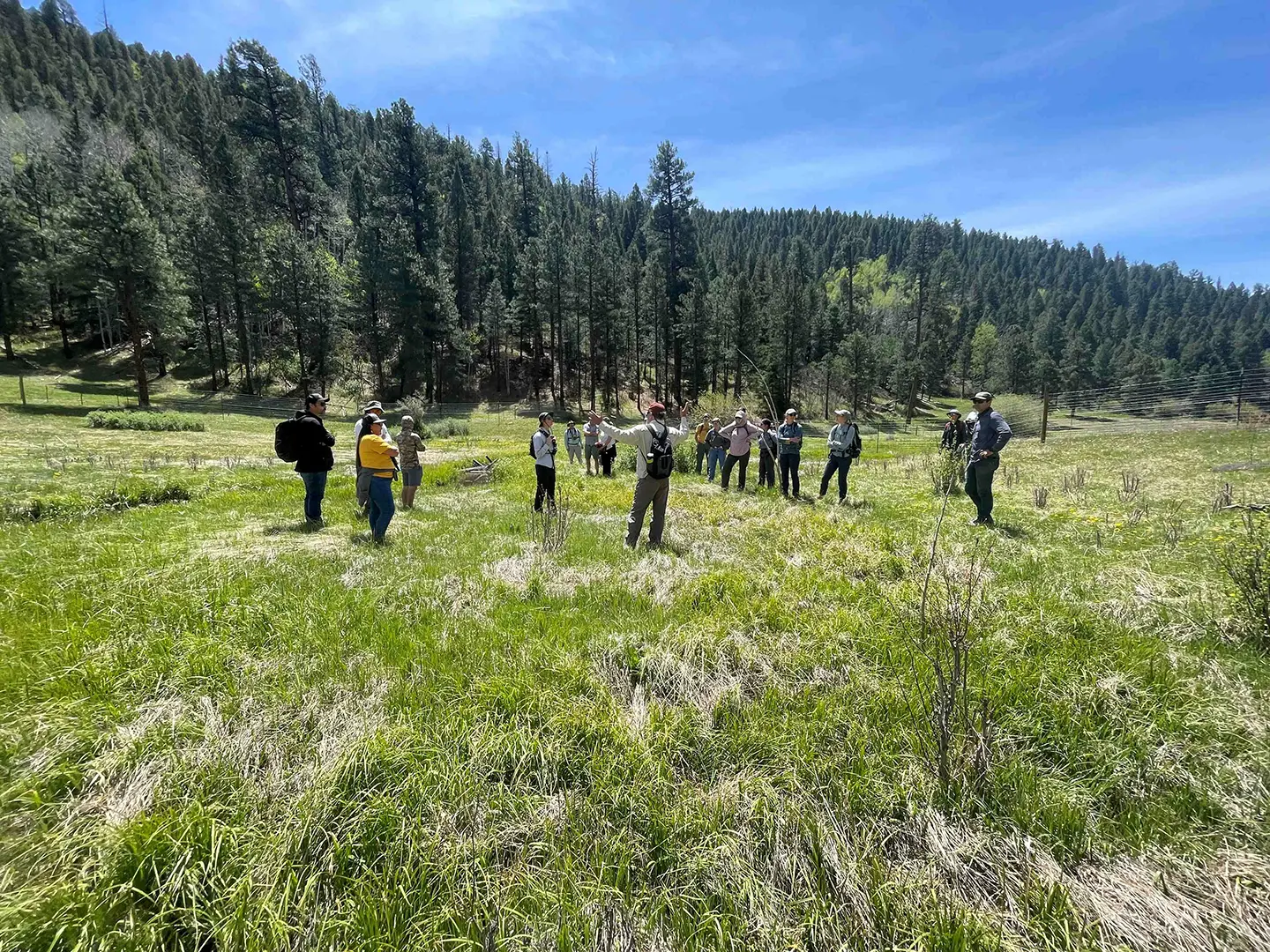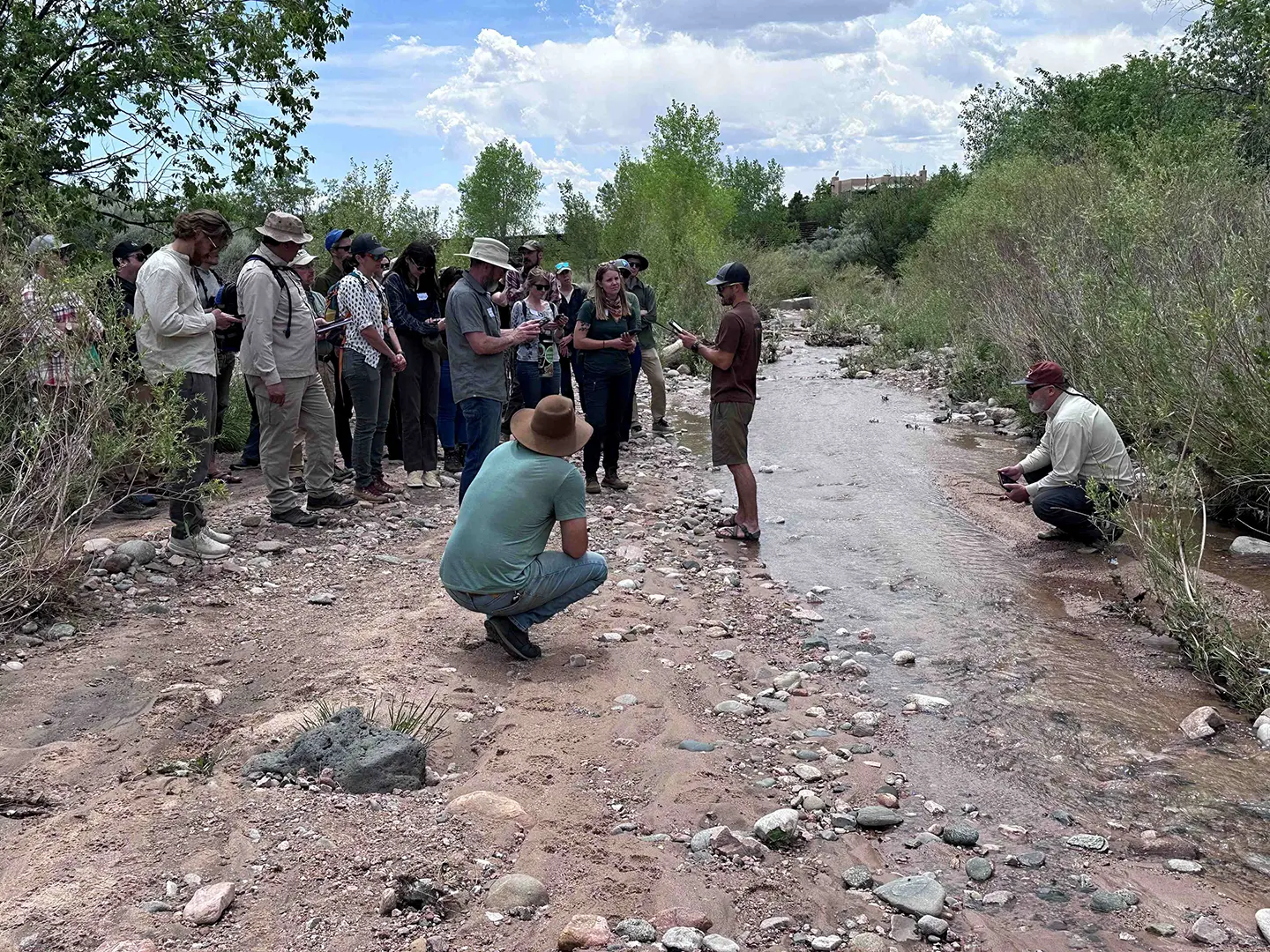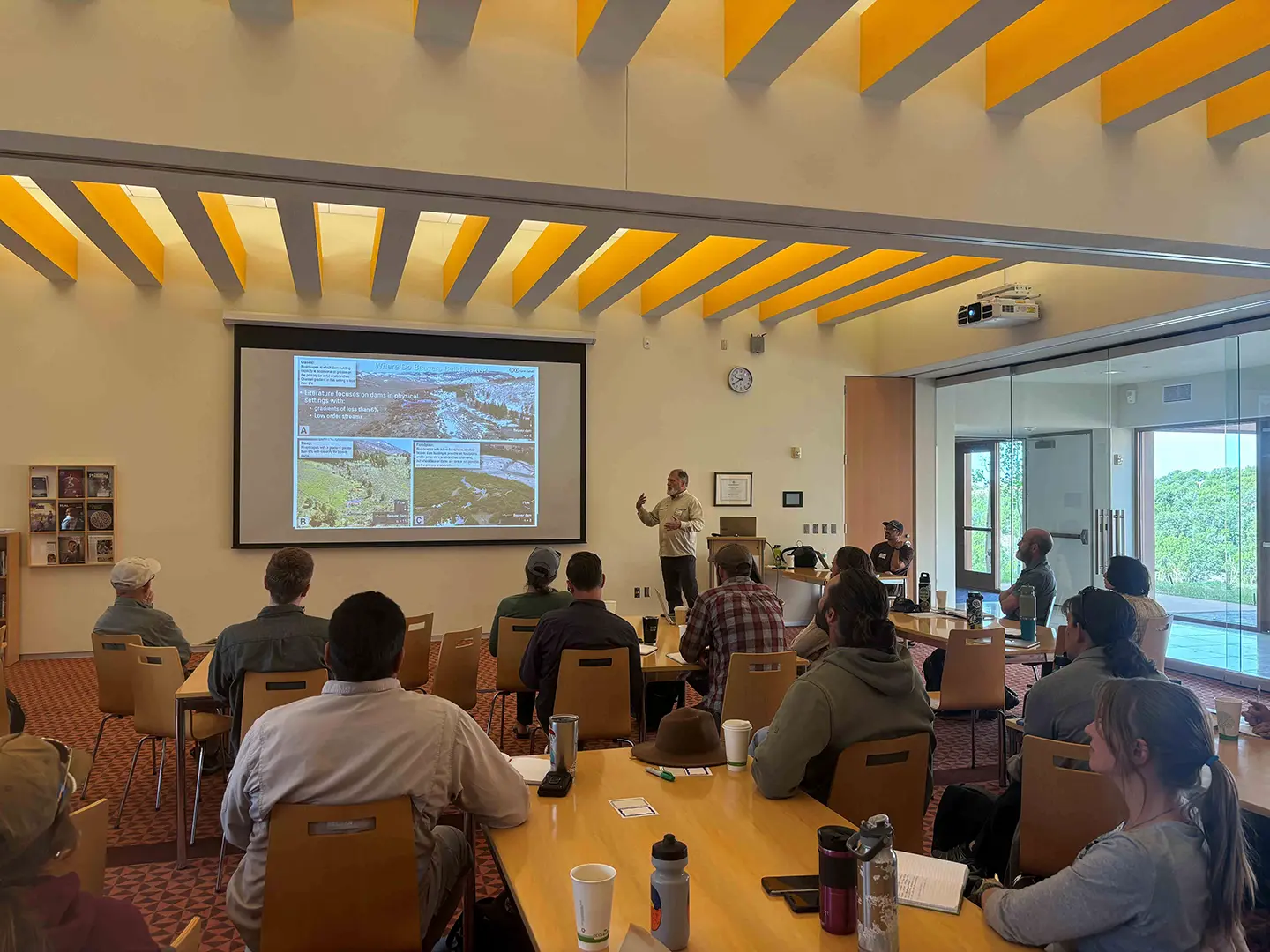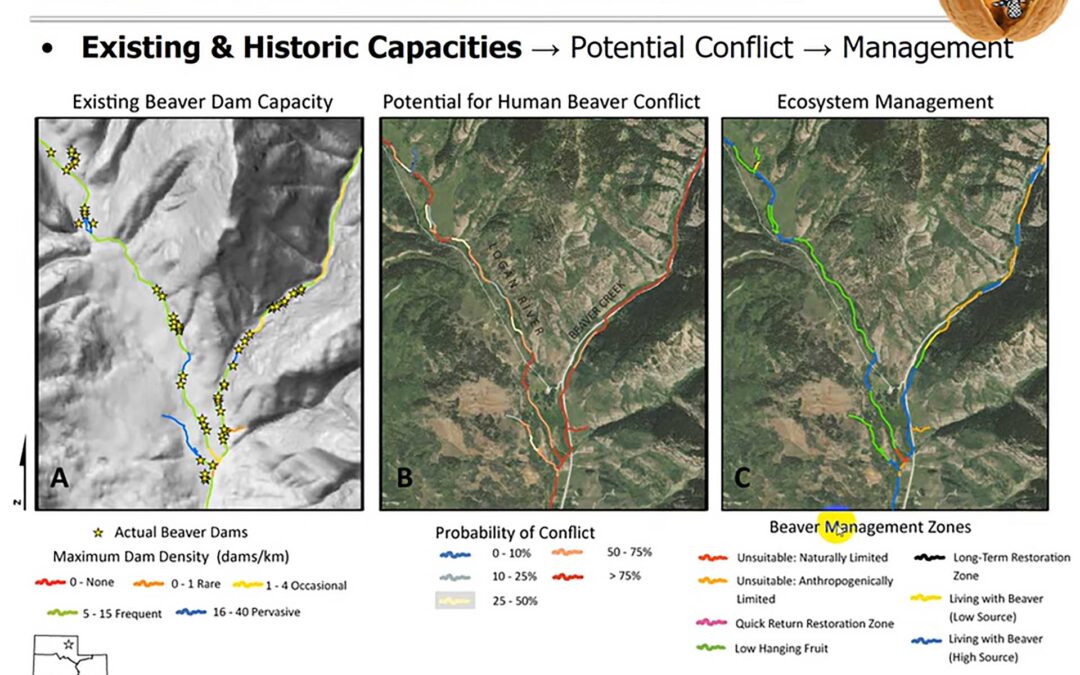BRAT model screenshot
Rio Grande Return has contracted with Utah State University to run the Beaver Restoration Assessment Tool (BRAT) model for the entire state of New Mexico. Rio Grande Return hosted a workshop on May 28 and 29, 2025 to present the initial findings of the BRAT Model. Materials from the workshop are available here: Workshop Summary [77 KB PDF] and Workshop Presentation [23 MB PDF].
The BRAT model was developed by Utah State University researchers to help better manage expectations about where beaver might be useful in riverscape restoration (Macfarlane et al. 2015). The BRAT is a spatially explicit network model that provides decision support for beaver assisted restoration and serves as a planning tool for resource managers, restoration practitioners, wildlife biologists, and researchers better manage expectations. Specifically, the model predicts where along streams and rivers beaver may be useful as a restoration tool and where they may be a nuisance, in which case their impacts can be mitigated or the nuisance beaver can serve as a source population for live-trapping and relocation to areas where they can help achieve restoration and conservation objectives.
Interest in beaver extends beyond simply managing beaver for beaver’s sake or managing their impacts. Beaver are becoming more broadly appreciated for their utility as an ecosystem engineer capable of restoring streams, rivers and wetlands to the benefit of numerous upland, riparian and aquatic flora and fauna. As such, results from the BRAT model are currently being used by various agencies and partners throughout the western U.S. to help manage beaver populations, carry out habitat restoration, and implement their beaver management plans.
The BRAT models estimates of beaver dam capacity come from seven lines of evidence: (1) a reliable water source (2) stream bank vegetation conducive to foraging and dam building; (3) vegetation within 100 m of edge of stream to support expansion of dam complexes and maintain large beaver colonies; (4) likelihood that dams could be built across the channel during low flows; (5) the likelihood that a beaver dam on a river or stream is capable of withstanding typical floods; (6) evidence of suitable stream gradient; and (7) evidence that river is too large to allow dams to be built and to persist.
The four primary questions that the BRAT capacity model asks:
- Is there enough water present to maintain a pond?
- Are enough and the right types of woody resources present to support dam building?
- Can beaver build a dam at base flows?
- Are dams likely to withstand typical floods?
The BRAT model facilitates approximate quantitative answers to these questions with GIS data.
References
Macfarlane W.W. , Wheaton J.M., Bouwes N., Jensen M., Gilbert J.T., Hough-Snee N., and Shivick J. 2015. Modeling the capacity of riverscapes to support beaver dams. Geomorphology. DOI: http://dx.doi.org/10.1016/j.geomorph.2015.11.019.



